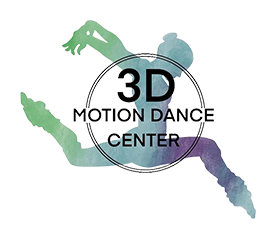Ballet Positions Every Little Dancer Should Master

Enrolling your child in ballet is a rite of passage for many parents. Not only does it cultivate grace and discipline, but it also serves as a platform for expressing creativity and storytelling through movement. In the bustling town of Apopka, FL, one dance center stands out for its dedication to classical ballet training—3D Motion Dance Center. Here are the five foundational ballet positions your child will learn in their introductory classes at 3D Motion Dance Center.
First Position
The fundamental First Position is the starting point of all ballet endeavors. The feet are parallel, heels touching, and toes pointing slightly outwards, like a perfect "V". The idea behind the first position is to engage the legs and turn out from the hips, a crucial move that underpins the elegance of all classical ballet movements. In establishing this posture, young dancers begin to develop the strength and flexibility required for their ballet journey.
How to Teach First Position at Home
Parents can encourage the correct execution of First Position by guiding their child to stand straight with feet directly under their hips, move their heels together, and then gently turn their toes outward. Visual demonstrations, such as standing alongside your child to show the mirror image, can be a helpful teaching tool.
Second Position
Next comes the Second Position, where the feet are wider apart, around the length of a step. Toes remain turned out, aligning with the knees and the direction in which the child's body is facing. Second Position offers more stability and a broader range of motion compared to First Position, preparing students for graceful and charming ballet arm work, or epaulement.
How to Introduce Second Position
Children can relate to the concept of Second Position by imagining themselves tracing a large semi-circle on the floor. From their First Position, they should move each foot an equal distance away while keeping their heels on the same line, ensuring their turnout remains steady.
Third Position
Found between First and Fifth positions, the Third Position is a vital transitional stance that allows for rapid and measured footwork changes in ballet. This more subtle and compact position involves one foot placed in front of the other, with the heel of the front foot touching the middle of the back one.
Practicing Third Position with Precision
Encourage your child to maintain the turned-out alignment of their feet's toes and knees in Third Position. They can practice the exactness of this stance by initially starting from First Position, moving their front foot to the side and slightly forward, and finally sliding the back foot toward the front, ensuring the heel is in line with the middle of the front foot.
Fourth Position
The Fourth Position in ballet involves a broader step out of the Second Position, creating a distance between the feet that is almost twice that in Second Position. With one foot ahead and the other foot to the side, dancers enjoy greater lateral movement and space to perform more expansive steps and turns while continuing to refine their posture and control.
Navigating the Fourth Position with Flow
Young ballet students can approach the Fourth Position by stepping wide from Second Position, ensuring a full point with both feet. This position should feel comfortable and balanced—their weight should be distributed over the entire space of both feet, with neither foot carrying more than the other.
Fifth Position
Fifth Position is the ultimate test of a ballerina's technique. The feet are tightly closed with the heel of the front foot pressed against the big toe of the back foot. This position embodies the principles of ballet; breathtaking alignment and strength. It's a position that appears simple, but mastering it takes discipline and time.
Finessing the Finer Points of Fifth Position
To help your child achieve Fifth Position, encourage them to step from Fourth Position, placing the heel of the front foot directly against the big toe of the back one while maintaining their turnout. This can be one of the more challenging positions for young dancers, and repetition and patience are key to its mastery.
By mastering these five basic ballet positions at 3D Motion Dance Center, your child is on the right track to success in the art of ballet. These positions serve as the foundation for the more complex steps and routines they will learn as they progress through the classes. If you're looking ballet classes in Apopka, FL and eager to witness your child's growth in ballet, contact 3D Motion Dance Center in Apopka, FL, and sign up for a free trial class today. Remember, every grand jeté starts with the perfect First Position.
